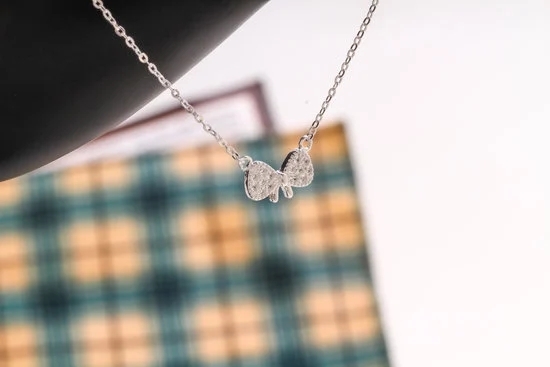Jewelry repair as a field can refer to both repairing broken jewelry or making alterations in order to customize pieces however the customer desires. Jewelry repair technicians help increase the longevity of customers’ precious and semi-precious possessions and keep heirlooms looking as beautiful as ever.
Becoming a jewelry repair technician can come with several benefits: You will have the ability to work in many different kinds of settings, you’ll be able to witness firsthand how rewarding it is to make customers happy with their repairs, plus there could be an interesting financial incentives with bonus offers depending on store and individual performance.
Steps Needed To Become A Jewelry Repair Technician
The journey towards becoming a jewelry repair technician involves completing steps ranging from formal education study and training programs to ongoing skill practices, certifications, and self-improvement. Typically for potential technicians starting out it requires some combination of passing tests and getting experience through apprenticeships in order to successfully become certified as well as get employed professionally in the industry.
Education & Training For Becoming A Jewelry Repair Technician
One benchmark that many prospective technicians strive for is obtaining a certification from any organization related to jewelry or watchmaking such as GIA (Gemological Institute of America), NAJA (National Association of Jewelry Appraisers), ABS (American Watchmakers-Clockmakers Institute) etc. These credentials are not necessary but they often hold considerable amounts of weight when it comes time for hiring opportunities.
Despite a lackof certification retailers still rely on finding aspiring technicians who have gone through specialized classes which focus on topics like goldsmithing, soldering, diamond/gem settings etc., along with other learning materials available from popular sources such as books, websites etc. Acquiring hands-on practice through workshops, internships and apprenticeships are also great ways for you to get into this field so consider reaching out to those who offer these experiences at your local jewelry stores.
Exploring Essential Tools and Techniques
Jewelry repair technicians are highly specialized individuals who use a variety of tools and techniques to restore jewelry pieces to their original beauty. A great deal of precision, finesse, and artistry is required when working as a jewelry repair technician.
The job involves reducing, adding or reshaping pieces of metal, removing burrs and filing down sharp edges, soldering broken pieces back together with a torch or laser welder, polishing gems and jewels, and electroplating metal surfaces. In addition to tool usage, the technician must understand safety protocols involving chemicals and other hazardous materials which may be used in the repair process.
In order to become a jewelry repair technician one must possess basic metalworking skills such as hammering, soldering, annealing metals and applying various metal finishing techniques. Knowledge of engraving lettering or designs onto metal surfaces is also an important skill for any aspiring jewelry repair technician to familiarize themselves with.
Training in this field can include certification programs offered by various trade schools that specialize in the craft but intensive self-training is often enough for many people interested in this career path.
One of the most important skills for successful jewelry repairing is stone setting technique where gemstones are securely held inside mounting brackets or indentations on the surface of other material such as rings or necklaces.
While some stones are glued into place using adhesives that have been specially formulated for precious stones – setting stones into place requires delicate pressure manipulation while manipulating tiny prongs around the perimeter of each stone so that it stays securely in place without crushing it debris on impact against other objects due to everyday wear and tear.
This creative endeavor requires precision judgement acquired through practice and training in order to be mastered successfully by a professional jewelry repair technician.
Acquiring the Necessary Skills
Becoming a jewelry repair technician requires a combination of practical experience and formal education. Although it can be possible to gain some necessary skills and competencies through on-the-job training, the best way to learn how to properly service jewelry is by attending a course in Jewelry design, repair or restoration. These comprehensive courses are not only beneficial for learning the intricacies of jewelry design, but they also provide hands-on experiences in fabricating, soldering, and polishing.
A few accredited institutions offer certificate programs specifically tailored towards jewelry repair technology. A typical educational program combines lessons in both theory and practical application in order to equip candidates with the technical understanding as well as providing them with the ability to work with tools professionally. Furthermore, modern academic programs incorporate 3D printing methods allowing students to explore more creative aspects while obtaining their degree.
In addition to receiving formalized training from credible programs, most cities feature vocational and trade schools that focus solely on shopcrafts such as metal refining, plating and polishing equipment utilization. These one day courses allow students to become familiar with different equipment designed for use within any given jewelry store and offers a clear step up from traditional apprenticeships.
Overall there are multiple pathways which prospective jewelers can take when looking at becoming certified jewelry repair technicians. From intensive diploma degrees through trade schools to short term courses focusing on particular areas of expertise – it pays dividends for future jewelry specialists to embark upon formal training in order sharpen their craftsmanship skills before entering into the field of professional jewelers.
Locating Available Opportunities
Anybody looking to become a jewelry repair technician should first consider the amount of effort they are willing to put in to achieve their goal. This is because getting the necessary skills and expertise requires dedication, training, and hard work.
Employment opportunities for jewelry repair technicians vary across different countries and regions as some countries might be more focused on manufacturing while others may have high chances of needing repairs on a larger scale. In either of these cases, potential technicians should begin by scouring online job boards and seeking advice from local jewelers as well as setting up small ads offering their services.
Finding accredited schools or courses offered at educational institutions is another route for those who wish to become a certified jewelry repair technician. After researching the options available locally or abroad, an interested individual can pursue formal education in this field by enrolling a program that offers the desired level of skill.
It’s important to note that although programs differ from one school or organization to another, what is typically required is an understanding of metalworking techniques like soldering, cold working techniques such as filing, sawing, etching and stone-setting; familiarity with precision tools such as loupe magnification enlargers; as well as manufacturing processes including manual polishing machines. Additionally, some sort of apprenticeship experience may also be required where hands-on training in authentic settings might be beneficial.
It’s worth noting that becoming proficient at this profession entails not only the technical mastery but also considerable business sensibility since the need for repairs depends on marketing efforts geared towards drawing potential customers into stores.
Quality customer service coupled with best practices must also be employed when undergoing these tasks which means achieving certification might take more than one route before an individual can increase their revenue streams significantly after establishing themselves as a reliable technician capable of producing quality results within established timelines.
By taking time to network with other professionals through online forums and attending related seminars, an aspiring technician should gain valuable insight that can serve them well in many professional roles later on in their careers.
Building up Speciality Skills
One of the best ways to make yourself a more appealing job candidate as a jewelry repair technician is to specialize in specific areas. It’s more attractive to employers when they know you possess expertise on particular settings, stones, and techniques. Dedicating yourself to developing your specialty skills can help you make your mark in the field.
If you have an interest in stone settings, consider taking a course that puts an emphasis on prong setting for diamonds or using collets for smaller stones like rubies and sapphires. Learning proper techniques such as crimping and soldering settings goes a long way if you plan to work with delicate gemstones or intricate pieces of jewelry down the line.
Taking classes taught by experienced professionals is the best way to ensure quality learning – take advantage of your local community resource center or even look into apprenticeships. Apprenticing under an experienced jeweler will facilitate a hands-on learning experience catered specifically to your strengths and objectives, while providing you with contacts within the industry.
Having expertise in antique or vintage repairs also makes you stand out from potential competitors for jobs. It’s important to understand unique clasp mechanisms, patina restoration, metal polishing, hinge repair, and parts specialist skills that are especially helpful when working on tricky items like watches or old broaches.
You may even want to consider honing some non-jewelry related specialties like welding since it’s sometimes necessary during complicated ring repairs. By expanding your range of knowledge beyond just jewelry repair basics you give yourself better chances for career opportunities with established firms in the field like retail stores or manufacturing plants that need skilled technicians who can truly do it all.
Crafting a Business Model
If you’re an ambitious jewelry repair technician looking to start a business, the most important thing to consider is how to create a successful and sustainable business model. Before embarking on this endeavor, research your market by surveying potential customers and analyzing your competition. This helps you identify unmet consumer needs that could serve as opportunities for your company’s development.
Next, consider how much capital you need to launch such a venture, as well as the costs associated with product procurement, marketing efforts and labor expenses. Keep an eye out for reliable vendors who will provide quality components at a cost-effective price point. Make sure to factor in updates or improvements that may need to be made over time; having a reserve of funds on hand can come in handy during seasons of diminishing profits.
As far as getting started goes, create and follow steps that ensure sound business decisions from day one. Work with a financial consultant if possible to create balance sheets and income statements that accurately reflect your spending habits and cash flow levels. Additionally, research federal and state regulations pertinent to jewelry retail businesses so you are sure to comply with relevant laws at all times.
Investing in new technology can also benefit your business tremendously; 3d printing is becoming increasingly popular among jewelry makers as it simplifies design processes while drastically reducing production costs compared to traditional methods. Ultimately, crafting an effective business model requires plenty of thought and careful consideration of both potential hazards and possibilities towards financial success. But when done properly, it is well worth the effort as it can provide steady income for years down the road.
Working as a Jewelry Repair Technician
Becoming a jewelry repair technician is a desirable job to have, especially with the rise in popularity of customized and bespoke pieces in recent years. It is also an incredibly sought-after profession as people rely on expert craftsmen to create unique items and restore possessions that may hold immense sentimental value. Despite the extensive skill set required, there are few formal training programs available.
This can mean that aspiring technicians may have difficulty finding work if they have not already established relationships with local outlets or retail stores. Fortunately, there are ways to bridge this gap and become employable that won’t even require a signficant amount of time – by establishing a client base.
Word-of-mouth promotion can be a great way to gain steady customers looking for personal services such as jewelry repair. Speak with your family and friends about what you can do, but don’t forget about professional organizations like chamber of commerce groups or social media focused marketing techniques such as Facebook or Twitter pages specifically designed for sharing your craftsmanship capabilities with other numerous individuals.
Not only will this increase your authority amongst potential customers, but will help inform them of the value you may offer them when compared to competing jewelers who may lack the experience to make complex repairs on intricate pieces.
Another reliable method of enticing clients is through running adona website services which allows techs to show their portfolio and range off potential projects. Techs should remember to include customer reviews & testimonies as credibility proves essential when it comes to online interaction, especially due to the high probability of fraudfound within this sector of business.
Popular search engine optimization tacticscan always be employed such as key words & phrases as well as allowingpeople ordering processesthat are easily navigational and fast-loading – all practices recommended by Google when tryingto maximize visibility amongst webpages vying for attention fromclients searching forcustom madejewelry repairsolutions& technicians near their geographic region.
Conclusion
Becoming a jewelry repair technician is an exciting and rewarding career that requires patience and technical knowledge. With the right skills, experience, and dedication, anyone can become an expert in this field. Because of this, it is important to have a detailed understanding of the materials used in jewelry repair, such as precious metals, stones, and alloys.
In addition to understanding all aspects of jewelry repair, one must also possess excellent hand-eye coordination and steady hands in order to perform accurate repairs. From soldering to crystal cutting and polishing, the ability to complete intricate detailing with precision is essential.
The demand for knowledgeable and practiced jewelry repair technicians will only increase as more people purchase luxurious jewelry pieces or items which require special attention due to damage or wear. Therefore it is important for aspiring technicians to stay up-to-date on new tools and techniques being used in the industry by attending conferences or training seminars offered by leading brands or organizations.
This not only helps you gain customized knowledge from experts but also shows employers that you take your craft seriously. Additionally, having a professional network consisting of other skilled technicians could be beneficial for finding job leads or expanding your business opportunities.
Last but not least, it’s important for jewelry repair technicians to stay organized when handling customer requests as deadlines are often strict in this particular field. Having a strong work ethic along with impressive customer service skills will be sure make you stand out among fellow professionals in the industry which can typically lead to more business opportunities.
By following these tips and investing time into developing your skill set while maintaining professionalism, you should have no problem becoming a successful jewelry repair technician with a stable base of loyal clients who trust your expertise.

Welcome to my jewelry blog! My name is Sarah and I am the owner of this blog.
I love making jewelry and sharing my creations with others.
So whether you’re someone who loves wearing jewelry yourself or simply enjoys learning about it, be sure to check out my blog for insightful posts on everything related to this exciting topic!





